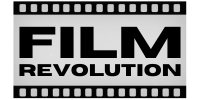Visual Composition and Framing
The use of design principles like the Rule of Thirds, symmetry, and leading lines has enhanced how filmmakers compose shots. These visual techniques guide the audience’s eye to key elements in the frame, reinforcing the narrative and emotions. The careful placement of characters or objects within the scene can subconsciously convey power dynamics, relationships, and themes, influencing the viewer’s emotional connection to the story.
Color Theory and Mood: Colors are no longer just aesthetic choices but are strategically used to communicate mood, tone, and subtext. Filmmakers use color palettes to emphasize the emotional arc of a character or scene—warm tones for comfort and happiness, cool tones for sadness or tension. Think of how Schindler’s List uses the color red to highlight significant moments or how Blade Runner 2049 uses neon hues to create a dystopian, otherworldly atmosphere.
Lighting and Contrast: Lighting design plays a critical role in conveying a story’s themes and emotions. From chiaroscuro lighting (dark shadows with stark contrasts) that evoke mystery or danger to soft, natural light that creates intimacy, lighting techniques shape how the audience perceives a scene. Movies like The Godfather famously use low-key lighting to enhance the dramatic tension and depth of character.
Set and Production Design: The design of sets, props, and locations has evolved to tell stories on its own. The environments characters inhabit can offer a glimpse into their psyche or reflect the story’s larger themes. For example, the futuristic sets in The Matrix symbolize a world controlled by technology, while the worn-down, rustic settings in The Revenant immerse the viewer in survival and hardship, giving context to the characters’ struggles.
Typography and Motion Graphics: Modern movies, particularly in the action and sci-fi genres, use dynamic typography and motion graphics to reinforce the narrative and elevate storytelling. Films like The Social Network or the Marvel Cinematic Universe rely on opening credits and title sequences to introduce tone, key themes, and even important plot points, offering the viewer a glimpse of what’s to come in an engaging, often visually stunning manner.

Establishing Mood and Emotion
Colors have a profound psychological impact on the viewer’s emotions. Filmmakers strategically use color schemes to evoke specific moods, whether it’s the warmth of golden hues to create a sense of nostalgia and comfort, or the coldness of blue tones to convey isolation or sadness. For instance, The Grand Budapest Hotel uses vibrant pastels to create a whimsical, dreamlike quality, while The Shining uses cold blues and reds to heighten the tension and unease.
Symbolism and Themes: Colors can serve as symbolic representations of key themes or characters’ emotional states. For example, in The Matrix, the color green is closely associated with the digital world and the concept of illusion, while red symbolizes the “real” world and the notion of awakening. The color choices help subtly reinforce the film’s larger message and themes, making it easier for the audience to engage on a deeper level without explicit dialogue or narration.
Visual Cohesion and Aesthetic Appeal: A well-thought-out color palette creates a visual harmony that enhances the movie’s aesthetic appeal. Consistent color schemes tie scenes together, ensuring a fluid visual experience for the audience. In films like Mad Max: Fury Road, the stark contrast between the desolate desert landscape (orange, brown) and the vivid blue sky not only helps differentiate between the world and action but also makes the visuals striking, immersing the viewer in the chaotic beauty of the world.
Character Development and Relationships: Filmmakers use color to reflect the development or transformation of a character. A character’s costume or the color of their surroundings can indicate their psychological state, growth, or shifts in allegiance. In Black Swan, the contrasting use of white (innocence) and black (temptation, corruption) in the costumes and lighting mirrors the protagonist’s inner struggle as she transforms from a reserved ballerina to a more liberated, darker version of herself.
Guiding the Audience’s Focus: Color can be used to direct the viewer’s attention to specific elements within the frame. By manipulating color contrasts or using color accents in particular areas, filmmakers can highlight important details, create focal points, or signal a shift in the narrative. In Schindler’s List, the use of the red coat stands out in an otherwise black-and-white film, symbolizing the innocence of a child amidst the horrors of the Holocaust and focusing the audience’s emotional attention.
